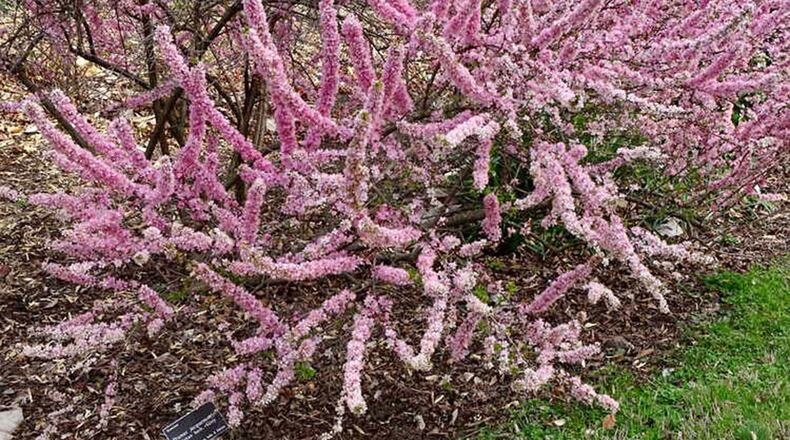Botanically speaking it is known as Prunus jacquemontii and is cold hardy from zones 6-9. It can reach 6 to 10 feet tall and as wide though most I have seen are in the 4 to 5-foot range. We grew them at the Coastal Georgia Botanical Garden, and you couldn’t help but revel in the beauty.
Imagine large stems of fragrant hot pink flowers erupting in an almost fireworks type display and growing as a partner with a Thomasville citrangequat loaded with fruit. It is a riotous color combination.
Another trait that I treasure is the parade of honeybees that are attracted to the most beautiful blooms imaginable. Pollinators aren’t needed, and birds will relish any of the tiny fruit that may form.
Late winter to early spring is a great time to plant two or three bush cherries in your landscape. Space the small trees about 8 to 10 feet apart or from other spring blooming trees like redbuds and dogwoods.
Like all Prunus species drainage is imperative. If your drainage is the least suspect incorporate 4 to 6 inches of organic matter to help loosen the soil and allowing water to freely permeate and transition away from the root zone. The planting hole should be wider than the rootball but no deeper. Wide holes allow for the best root expansion and establishment. Apply and maintain a good layer of mulch after planting.
Cherry species are typically among the early bloomers of the landscape, and the Afghan cherry will certainly comply. You’ll definitely want it in the spring landscape with flowering quince, forsythia, spirea, and azalea. Daffodils and saucer magnolias will partner well with this harbinger of spring.
If you are located near water like a pond or small lake, plant where the cherry blossoms can reflect off the water. Be ready to photograph this spectacular blooming display.
There are many varietal selections with Sweet Pink considered one of the best. You’ll also find several hybrids where the Afghan cherry was a parent. Hopefully, you live in an area with progressive garden centers either will have them in inventory or will get them for you. I hope you’ll choose the Afghan cherry to help your spring have a long and colorful season.
———
(Norman Winter, horticulturist, garden speaker and author of, “Tough-as-Nails Flowers for the South” and “Captivating Combinations: Color and Style in the Garden.” Follow him on Facebook @NormanWinterTheGardenGuy.)
About the Author
